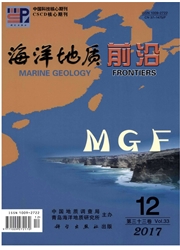

 中文摘要:
中文摘要:
以苏丹L盆地G油田辫状河三角洲储层为例,结合地震、测井和地质资料,总结出综合预测砂岩储层的方法。在井震结合划分和建立五级高分辨率层序地层格架的基础上,首先,利用岩心、录井、测井相分析井点沉积微相,并根据三维地震反演数据体和地震属性,从剖面和平面上分析井间砂体分布特征;其次,综合井点信息和平面砂体分布认识,分析各砂组的沉积微相平面展布,编制沉积微相平面展布图;最后,通过测井相、地震反演成果和地震属性相结合,对砂岩储层进行定量预测,编制砂体平面展布图,为油田开发方案编制提供地质依据。
 英文摘要:
英文摘要:
The application of high-resolution sequence stratigraphy remains a big concern in the early stage of development of oil and gas fields.The recent development of high resolution seismic technology together with the accumulation of geological data have made it possible to carry out high-resolution sequence stratigraphy study in the early stage of oilfield development for reservoir prediction.Taking the deltaic reservoir of a braided river in the G oilfield in the L Basin of Sudan as an example,we present in this paper a method to predict the sandstone reservoir by integration of seismic,logging and geological data.Correlation of wells and seismic data leads to the establishment of a five grade framework of high-resolution sequence stratigraphy.Microfacies are defined according to the study of core,mud logging and petrophysics,and the sand distribution pattern between wells is defined with vertical and spatial 3Dseismic inversion data and seismic attributes.Then,microfacies maps are compiled for each formation based on the well data with special concern in the distribution pattern of sand body,and finally a map showing the distribution pattern of sandbodies is made as the tool for reservoir prediction.
 同期刊论文项目
同期刊论文项目
 同项目期刊论文
同项目期刊论文
 期刊信息
期刊信息
